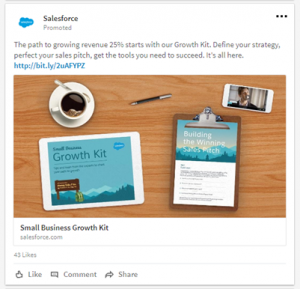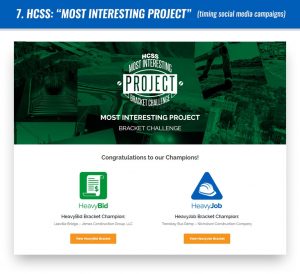It can feel counterintuitive at first, but this approach works wonders in attracting new clients on LinkedIn.
With nearly 500 million members in 200 countries, it’s easy to get lost in the crowd on LinkedIn.
The key to standing out and winning new business on the platform is to remember a golden rule of sales and marketing – the riches are in the niches!

Go Niche or Go Home
One of the biggest challenges on LinkedIn is how to narrow the field of potential customers you can serve.
The #1 thing I’ve found in teaching others how to use LinkedIn to generate new sales leads, add clients and increase revenue is that you’ll immediately fail if you try to be all things to all people.
Instead, you need to target some niche audiences or industries, and then become a big fish in those smaller ponds.
That way, you don’t get lost inside the ocean of competition on the platform.
For example, when I was growing my own business using LinkedIn back in 2012, I decided to sell my marketing services to a tiny, niche group (Debt Collectors) who were gathered on the platform.
Despite my initial fear that targeting such a small niche wouldn’t bring me enough business, it did just the opposite: In less than 90 days, I’d generated six figures of revenue and had to hire staff to complete all the new projects I’d landed!
How To Get Niched on LinkedIn
One way to do this is to consider what key audiences you want serve, and to make that very clear on your profile, so that those target audiences can find you and get excited about working together.
For example, the reason I chose Debt Collection as my initial “niche” on LinkedIn was simple – I’d worked for a trade association in that industry, so I had familiarity with the biggest problems and challenges debt collection agencies faced on a daily basis – especially when it came to PR and marketing.
Also, my first (and at the time, only!) client was a debt collection agency, so I had both industry-specific examples and a testimonial to use in appealing to other collection agencies.
You can do the same thing – niching your product or service down to some target audiences based on your existing clients – using those industry-specific work samples and testimonials to appeal to additional prospects who do the same type of business.

An Alternate Approach
Another way to niche yourself on LinkedIn is to become the de facto expert on a certain type of service or product that appeals to clients in numerous industries.
A great example of how this can be done successfully is taking look at high-level Business Coach and Consultant John Hawkins.
Rather than targeting a few industries or audience types, he decided to dominate the “Leadership” niche and appeal to a wide variety of audiences – from casinos to churches to companies and individuals – looking for leadership consulting and coaching.
“When you provide a service and you help people where they’re at, with what they need versus what you think they need, all kinds of doors get opened and all kinds of people become interested,” Hawkins told me during a recent podcast conversation. “I’ve worked with casinos, auto manufacturers, schools, hospitals, churches and more.
“It was funny because I started out very, very, very focused, and now it has expanded,” he says. “People might think, ‘You’re all over the map,’ but I’m really not, because I fit within leadership, building and increasing sales and revenue, and also increasing quality of life for employees.”
Your Approach + Your Niche
Which niche approach you take (industry-specific vs. topic specific) might depend on how refined your experience is.
Either way, the key is to make your LinkedIn profile appealing to a specific group of people interested in your products and services.
The best way to do that is by getting as clear and niche-focused as you can, especially if you’ve already generated great results for clients in a specific industry and can leverage those testimonials and examples to appeal to more prospects in the same vein.
You can also choose to try and dominate a topic, similar to John Hawkins’ approach, but you’ll need a large swath of testimonials and case studies to win over the broad base of audiences you want to appeal to.
Digital & Social Articles on Business 2 Community(49)
Report Post






